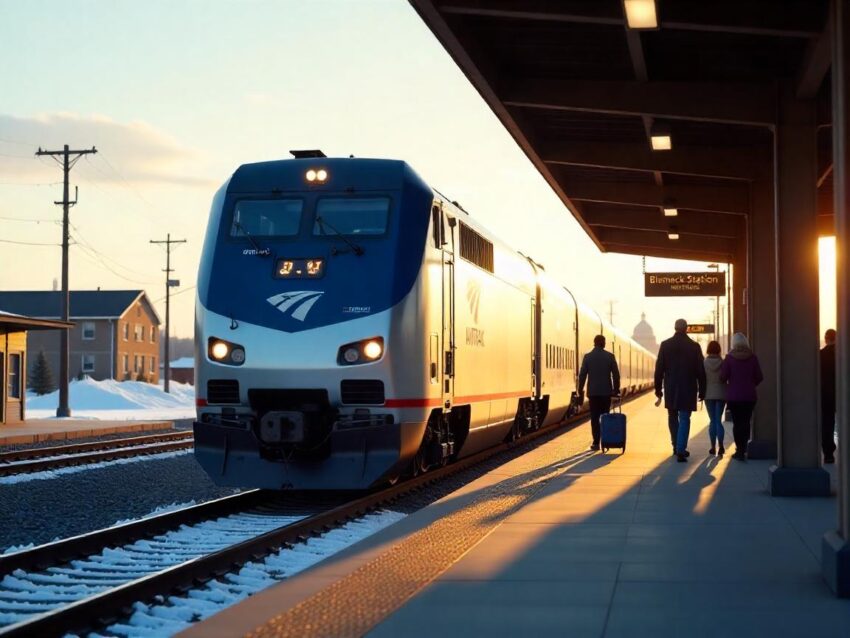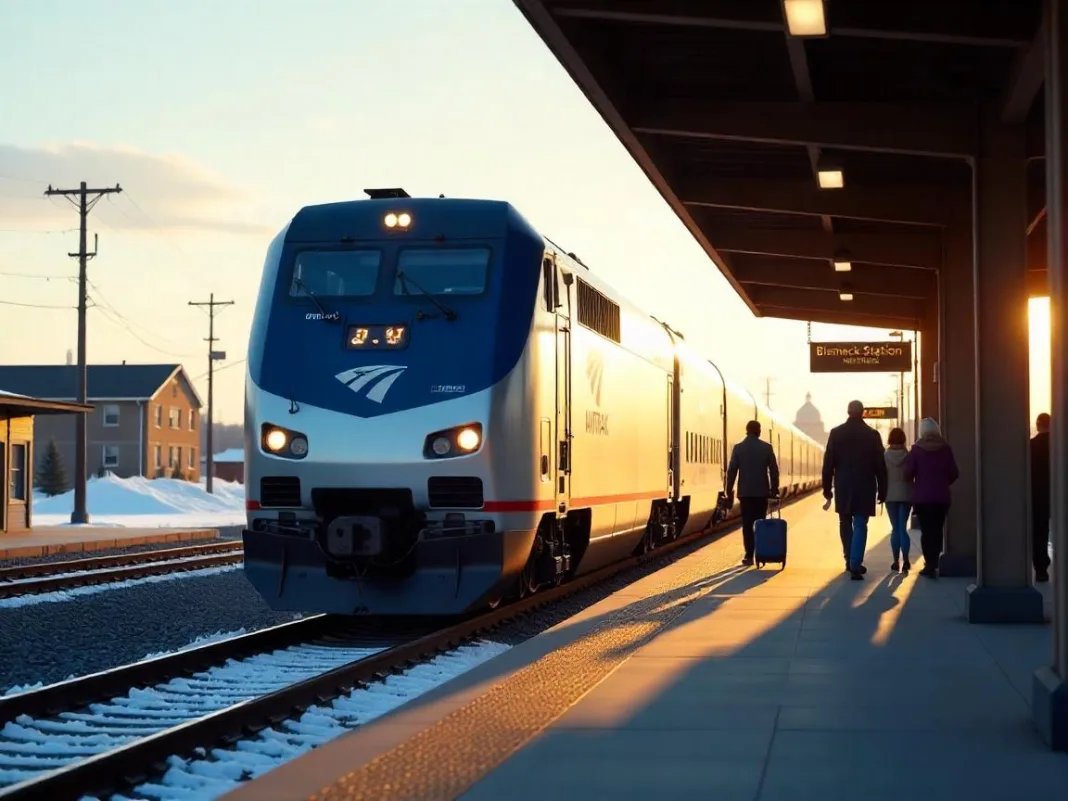Monday, July 21, 2025

This week the Bismarck-Mandan Metropolitan Planning Organization (MPO) formally kicked off an extensive feasibility study on extending the once and future Amtrak North Coast Hiawatha service — last operated in 1979 — to the state capital. Embedded in national strategy and local agendas, the initiative offers the potential to reframe regional mobility, stimulate economic development and strengthen our communities.
Transportation & Infrastructure
Central to the plan is the re-establishment of passenger rail service on the North Coast Hiawatha line, from Chicago to Seattle. The study will also look at how to most cost-effectively improve the existing track, through rational development of signal systems and positive train control (PTC) technology as well as best practices in integration with freight operations—all essential pieces to safety, capacity and reliability.
Further, these efforts fall within line the Corridor Identification and Development (Corridor ID) Program of the Federal Railroad Administration under the Infrastructure Investment and Jobs Act. That program has already earmarked as much as $500,000 in planning funds to revive this corridor, starting by tying it into a wider federal plan to boost intercity rail in the United States.
Local Economic Development
MPO Executive Director Kim Riepl speaks to the potential economic impact of renewed rail: fresh tourism dollars, spread of construction dollars, and business support. Long-distance rail revivals – such as these in New York and Pennsylvania – can draw strong ridership and secondary impacts in rural areas, including jobs created from station rebuilds, operations, and related services, according to FRA studies.
Capital expenditures — such as nearly $620 million on infrastructure improvements, $330 million for new equipment purchases, and $17.6 million on station rehab — pave the way for federal grants, an expansion in workforce and small business contracts along the line.
Community & Social Impact
There is wide support from Bismarck and the surrounding Mandan area residents. The MPO has had discussions in its forums and in public meetings about the concept of including transit as an option. Beyond tourism, intercity train access can promote social equity — uppermost for those without automobiles or whose lives take them out of reach of common regional or national air services — by providing reliable intercommunity and national connections.
A renewed rail corridor would also make it easier to get from cars and buses to ride‑shares in the MPO area, setting the stage for better local transit systems to connect with regional rail.
Strategic & National Policy
This spasm of activity is playing out against a backdrop of a larger national effort to resurrect long-distance passenger rail. Long distance service study timeline: The FRA is involved in a long distance service study involving states, tribal, railways and MPOs after the $8 billion that the 2021 Bipartisan Infrastructure Law was credited to rail development.
Corridor ID 6, North Coast Hiawatha The designation of North Coast Hiawatha corridor ID makes this health center a pipeline project for future rounds of funding. That addition mirrors strategic policy objectives to ensure equal investment in urban corridors (Boston–DC, Chicago–Milwaukee) and underserved rural routes like Bismarck guarantee rural mobility levels with scoot with broader connectivity efforts.
Urban Planning & Accessibility
The focal point of study remains the siting and designing of stations. Planners are seeking to strike a balance among easy access, minimal disruption to the community, and the chance to develop together—commercial, residential or mixed-use around new rail hubs. The typology takes in stops in rural areas, like Mandan, and larger regional hubs, as well as a central station in Bismarck.
These new nodes need to meet ADA requirements, connect with local transit, and have an eye for future populations shifts, futureproofing the system for decades.
Technical & Engineering Considerations
Reactivation requires meticulous technical work. Historic alignments like Butte-to-Helena route changes need to be designed for up-to-date safety and speed. Track improvements, signaling upgrades and grade crossing fixes are the basics. And, creating sufficient Superliner-compatible sidings and service facilities is important in order to assimilate well with Amtrak’s fleet.
Cost estimates for equipment and infrastructure are greater than 1 B, with engineering, staffing and compliance (such as PTC) being key.
Moving Forward
The MPO’s study anticipated to be finalized over the next 6-12 months, It will include cost models, ridership projections, station footprints and methods for funding. Stakeholders will then seek federal packages such as utilizing Corridor ID placement and monies from FRA/DOT discretionary pots.
If all lines meet, the project could achieve financial close as soon as late 2026 and be ready for construction soon after, with service as early as 2030. In the meantime, this effort is already fostering local cooperation and turning attention to the groundbreaking power of transportation investment.
Conclusion
The plan to restore Amtrak service to Bismarck is about more than sentiment — it is the juncture of infrastructure, opportunity and community empowerment. And with federal policy momentum at its back, planning capital in the bank and stirring local interest, the rebirth of the North Coast Hiawatha is moving from pipe dream to concrete plan. What happens in the next twelve months will decide whether Bismarck once again takes its place on the national rail map and whether the citizens of the city step into a future of movement, growth and mutual access to urban assets.







